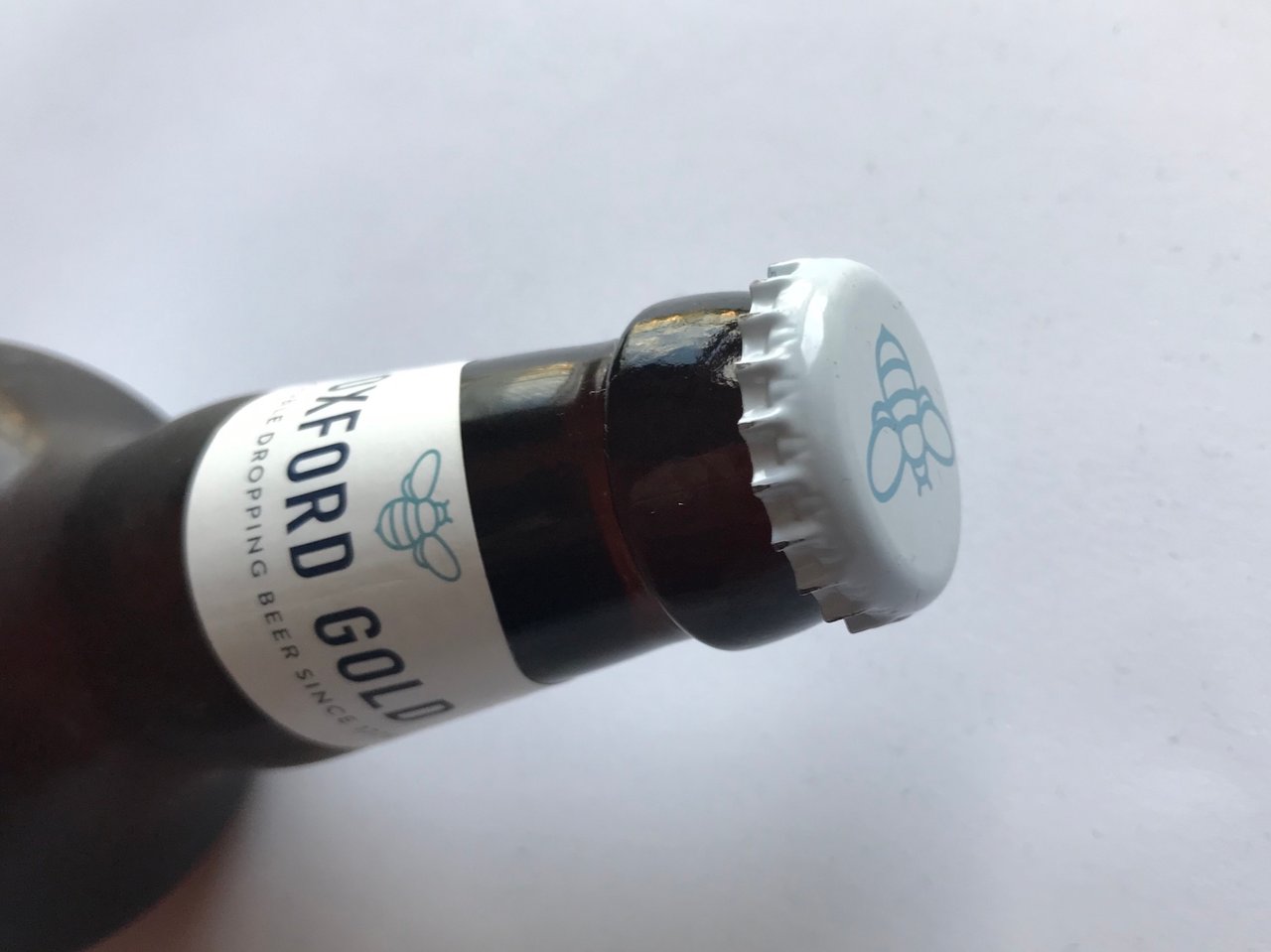 Wordless Wednesday – Hutong 1
Wordless Wednesday – Hutong 1











Just an ordinary economist who loves leatherworking, photography and video. Love cooking. Eating I love even more. I travel. I drink as well
 Wordless Wednesday – Hutong 1
Wordless Wednesday – Hutong 1











 Dram! – Glenfiddich 12 – Single Malt Scotch Whisky
Dram! – Glenfiddich 12 – Single Malt Scotch Whisky

Dear Coilers, for the second whisky review on Coil and Cinnamon I have chosen to present you...
Glenfiddich 12 Year Old single malt Speyside Scotch whisky, the best selling whisky in the world.
Flowing in the Valley of the Deer since 1887, this family’s signature expression is also the world’s most awarded single malt Scotch whisky.
With a unique freshness from the same Highland spring water they’ve used since 1887, its distinctive fruitiness comes from the high cut point William Grant always insisted upon.

William Grant, the founder of Glenfiddich distillery, had put his son Alec in charge of the stills. His job was to find the best part of the distillate. He chose only the heart of the spirit, although good spirit was lost. Even today they use the same unusually high cut point for an unequivocally clean, estery, sweet and fruity distillate. Ready for maturation.
Glenfiddich 12 is matured for 12 years in Olorosso, European oak sherry and American oak casks before being married by the Malt Master, Brian Kinsman, in specially designed, uniquely sized oak marrying tuns for 9 months.

Creamy with a long, smooth and mellow finish, the 12 Year Old is the perfect example of Glenfiddich’s unique Speyside style and is widely proclaimed the best dram in the valley...
...so let’s taste it...
 Brew! – Brakspear Oxford Gold Beer
Brew! – Brakspear Oxford Gold Beer

Dear Coilers, new Brew! is here with another ale which many Englishman find among their favourite. It will be served in Coil’s taproom for the subscribers.
This “Gold Beer” is as a fact English Pale Ale style, about which we have learnt...
PALE ALE is probably the first beer style on encounters when starts entering the world of craft beers. Those are brews of moderate hoppiness (both in hoppy bitterness and flavour) with balancing malt flavours. Not all Pale Ales are pale in colour as it varies from very pale to light amber.
Pale Ale just has to be well balanced and the enjoyment is guaranteed.
English Pale Ales showcase both the flavors and bitterness of hops (the hard water of Burton-on-Trent, where this beer style was born, helped bring out a slightly hoppier profile), but especially in the English variety, that’s usually tempered by maltiness. You can generally expect a range of faintly caramelly and bready malt notes against the characteristically earthy, floral, herbal, or resiny notes of English hops.

BRAKSPEAR
Nicolas Brakspear, a distant relative of the Brakspear family was the only Englishman to ever be elected as Pope (in 1154.) and was known as Pope Adrian IV. His papal seal contained an image of a bee, and so that’s where the brewery logo comes from.
In 1769, 19 year old Robert Brakspear became the pub landlord of the Cross Keys, and there Brakspear Bitter was born and started being brewed. He later moved to the bigger, Bell Street Brewery.
Robert died in 1812, owning 34 pubs...
...Modern Brakspear is the company passionate about great pubs. The family has been running pubs for over 200 years and, while many things have changed in that time, the pub remains at the heart of British life. Today, as ever, it offers great food, great drink, and a place to enjoy the company of others – friends, family or fellow drinkers.
They are proud to still be family owned and run, which means they make all their decisions for the long term benefit of the company, their pub tenants and their customers.
Today they run 132 pubs all over the country.

BRAKSPEAR OXFORD GOLD – is a remarkably zesty brew, with fresh, citrussy aromas and a firm, fruity flavour. Pale ale malts provide the beer with its gold-gilt shimmer, spruced by a hatful of crystal malts to give body, texture and a delicate honey’d wrap...
 Wordless Wednesday – Voyage
Wordless Wednesday – Voyage









 Dram! – Laphroaig 10 – The First Whisky Review On Coil – Ever And Forever
Dram! – Laphroaig 10 – The First Whisky Review On Coil – Ever And Forever

Dear Coilers, the day has come. Here is the first whisky review on Coil / and Cinnamon.
Being non manipulative and as democratic as I am, I have let YOU choose the bottle to be reviewed as the first one...

...and you have chosen it to be a Laphroaig 10 Year Old Islay single malt Scotch whisky.
On the far edge of the Scotch whisky map, it's supposed that the art of distillation was first brought to Islay by Irish monks. Being remote, it’s an art that flourished in the hands of the islanders, whose illegal operations tested the resolve and means of the tax man. Eventually, the law relaxed, various whisky makers set up legitimate distilleries, among them a pair of farmers, Donald and Alexander Johnston, who in 1815 founded their distillery on the island’s south coast, Laphroaig, so called after its location, ”broad hollow by the bay”. It would remain in family hands for the next 139 years with Ian Hunter, a father of Laphroaig 10 as the last from the family line.

Laphroaig 10 Year Old is the original Laphroaig, distilled the same way today as when Ian Hunter invented it more than 75 years ago. It is the foundation of all other Laphroaig expressions.
In making Laphroaig, malted barley is dried over a peat fire. The smoke from this peat, found only on Islay, gives Laphroaig its particularly rich flavour.
Those enjoying the Laphroaig 10 Year Old will first notice the bold, smoky taste, followed by a hint of seaweed and a surprising sweetness with a long finish.
This whisky was also named 2019 Best Single Malt Scotch 10 Years & Under by Jim Murray's Whisky Bible.
So let’s taste it...
 A Story About The Valley – Lazy Sunday Philosophical Thoughts
A Story About The Valley – Lazy Sunday Philosophical Thoughts

There was a valley which looked like a desert before its Lord had built the irrigation system and invited dispossessed people to inhabit it.
The Lord allowed everyone to cultivate the land the way they wanted to, without any requirement or stipulation and all the fruit grown were going to those who grew them. He gave them possibility to donate part of the harvest and place it in his granary but hasn’t forced them to. The Lord had more than enough for himself and his family.
The valley started blooming in life and many people came to try to live of its fertile soil. Some tried to work on land but haven’t stayed long. That kind of life wasn’t what they’ve thought it would be. Some left the valley because they couldn’t leave their old place for good. Some stayed and worked hard though many times the land was not too generous.
But the Lord was observing their work from his castle on the top of the hill. He was watching them helping each other, sharing tools, giving advices and exchanging experiences, all for the well being of the valley and the community in the valley. They were taking care of each others fields like those were their own. Watering, weeding out, fertilizing...
One day the Lord decided to award the most assiduous, hardworking and the most productive of his subjects.
The thrill in the village was great. People were happy and thankful to the Lord for noticing their hard work and participation in building the community on once-desert, empty valley.
The news about the good Lord spread around and soon many new people came to work on his land. All were accepted with joy and were helped and guided so that their crops could grow as productive as of those who were there since the beginning.
The Lord noticed that many of the newcomers were hardworking and was happy to have them in his valley. But when the time came for him to award them, he left them out and had shared all with his old workers.
Many were angry, calling the Lord unrighteous, thinking that they deserve their part of the share. They have been knocking to the doors of his castle asking him to reconsider his decisions...
Experienced workers who were in valley for a long time told them not to worry, that the Lord was good and righteous and that the time will come when he will award their hard work too...
...the Lord really was righteous...
The time has passed and the people have changed. They’ve started envying those who were in Lord’s mercy and started searching for the way to cut the crop of their fields.
They’ve stopped fertilizing and weeding out the fields of some workers. Sometimes would tell them they’d water their land but have left the latch of the irrigation system closed.
The crops started to fade...
The righteous from the old workers have known what was going on but they’ve continued to work and live the way they’ve decided to long ago, far from the envy and intrigue.
New settlers were arriving to the valley and were harvesting their land with the help of the community, yet the conspirators haven’t noticed that. They were too occupied by the evil plans.
And the Lord kept sharing fairly. The righteous were happy with whatever they’ve got, newcomers who accepted the rules of the community were prosperous too as they’ve learnt that the valey was designed as the free land in which those who help the community will prosper.
The conspirators were left alone on the side despiced by all. Only the Lord was still good to them as he was good to all.
The Lord was good and he expanded the valley and have build new irrigation system with the help of the settlers who were working on it when they should have their rest time. The Lord awarded them for their work.
...when the news about the new, fruitful, part of valley spread around new people rushed to inhabit it...
The Lord is still good and righteous and is observing the valley from his castle on the top of the hill...
- Thomas Jefferson – ‘20.
Thanks to the Niels the Dutch for the spiritual help and encouragement
 Brew! – The Dark Side Porter
Brew! – The Dark Side Porter

Dear Coilers, this Brew! brings you the beer, name and the design of which must be familiar to you and it will be reviewed in Coil’s taproom for the subscribers.
It is a Porter, the style which was covered as the first one in the Brew! series about beer.
As a reminder...
Porter is an old style of beer. It originates from the early 18. century London in pubs of which different old styles of beer were poured. A legend says that a barman in one of the pubs blended mild and light hoppy beers with darker aged old ales. The result he got became a hit so brewers decided to make a beer style which will have the qualities of that blend. Porter was born. Through the time, brewers were experimenting with different malts, hops, yeasts... and they’ve made Stout. As a fact Stout is stronger Porter. It is Stout Porter.
Porter was popularized by Arthur Guinness, who brewed it until experimenting with recipe gave a stronger, Stout Porter, a Guinness!

This one was brewed in Međimurski Lepi Dečki Craft Brewery (Handsome Boys of Medjimurje) which is located in the very north of Croatia, in the town of Čakovec in Međimurje region. Founded just few years ago, in 2016, but due to market demand, they have already expanded their capacity three times, and now they produce close to 500,000 liters of beer per year with a constant and well-established distribution throughout Croatia and abroad.
By constantly investing in the production, they have managed to form their own laboratory for quality control as well as their own production of brewer's yeast strain, which guarantees them and their consumers the constant beer quality.
They distribute beers in beer kegs, bottles and cans, which they are especially proud of.

THE DARK SIDE PORTER is made for those who love dark ales with notes of cocoa and chocolate, the inspiration for the beer... do I have to tell you?!
Let’s taste it!
 Wordless Wednesday – Screenshots
Wordless Wednesday – Screenshots










 Dram! – Glasses – Vlog Plus Trivia
Dram! – Glasses – Vlog Plus Trivia

Dear Coilers, we are coming closer to tasting whisky on Coil and Cinnamon. In “Dram! – Flavours In Whisky” series of articles you could learn where the notes and flavours come from.
But whisky has to be drunk from the glass, as drinking it straight from the bottle isn’t recommended nor practical.
The fact is that most of the types of glasses can serve the purpose, some better some worse but most will choose either tulip shaped glass or tumbler glass 🥃.
Watch about it on my new Dram! vlog, exclusively on Coil and Cinnamon.
https://www.cinnamon.video/watch?v=317998338811102521
Always remember to drink responsibly!!!
Do NOT let alcohol interfere with your family, social and professional life nor ruin your health!

Dear Coilers, just a trivia for you on this Sunday. Crypto market might be in red but it doesn’t mean that you can’t learn some interesting facts.
Do you know that many of you have said that you were someone’s slave many many times yet you were not aware of it. You just wanted to be polite.
The Italian salutation ciao, which had become very popular in many parts of the world outside Italy, originated in the dialects of northern Italy.
In the dialect of Venice, ciau literally means “servant, slave” and is also used as a casual greeting, “I am your servant.” Dialectal ciau corresponds to standard Italian schiavo - slave, and both words come from Medieval Latin sclāvus.
Declaring yourself someone's slave might seem like an extravagant gesture today, but expression such as “Your servant, madam” was once common.
In English language servant was used in variation of phrases as “Your servant”, “Your humble servant”, “Your obedient servant”, and was very common in everyday life especially in gentlemen to lady, gentlemen to gentlemen and in business correspondence.
I can even remember using “your obedient servant” in banking circles in the very early 60s in the UK – Thomas Jefferson
The phrase peaked in the middle third of the 19th Century and began to really decline around 1920, but remained in formal military and government correspondence, especially diplomatic, until at least the 1950s, known to be used even in 1960s.

Similarly, the Classical Latin word servus meaning slave is still used as an informal greeting in Central and parts of Eastern Europe like Southern Germany, Austria, Slovenia, Croatia, Czech Republic, Slovakia, Hungary, Poland, Romania, Ukraine... mostly in parts of Central Europe that were formerly part of the Austro-Hungarian Empire.
In my borntown, Zagreb, Croatia (Agram in German), servus/serbus is used as an traditional salutation by the “Real Zagrebians”. When we return to our beautiful city after rumbling the world, we say: “Serbus dragi Zagreb moj” (Your servant, my dear Zagreb). (Though modern and widely used local salution is bok (coming from “Bog” meaning God, which came from old salutation “Bog i Hrvati” meaning God and Croats))
Slave in salutation is not common in Europe only, in Southeast and East Asia, words that originally meant “slave” or “your slave” can be found, but have developed into pronouns of the first person through their use in showing respect and humility.
In Japanese, for example, the word boku is used to mean “I, me,” especially by boys and young men, and it comes from an old Chinese word meaning slave or servant and now pronounced pú in Mandarin.
Header pic: The Gallant Suitor by Edmund Blair Leighton
Thanks for reading,
Srdan
My Twitter
My Cinnamon
Dear Coilers, if you are still not subscribed, do it. this post is all free but there are many gems hidden in the subscribers area of blogs on Coil. plus you get Imgur Emerald, Cinnamon Video... no adds, no tracking, no... it is the present of the future of Internet.